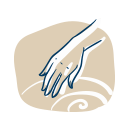Nails

The nail is a horny growth on the fingers and toes. The nail is a horny growth on the fingers and toes. Nails developed from claws, found in other animals as well. Nails are made from a hard protective protein called alpha-keratin, which is found in the hooves, hair, claws and horns of vertebrates (Wang, Bin 2016). The function of the nail is to protect the pads on the upper side of the fingers.
In the nail, the cells are constantly dividing and the newly formed cells produce the protein keratin, which they fill the cytoplasm with. Cells saturated with keratin then die. Thus, the upper whitish layer of the nail is built of dead cells. The nails are most sensitive on the growth part, and in the case of damage to the nail root, the nail may die, fall off or change its shape.
The growing part of the nail is under the skin at the proximal end of the nail under the cuticle, and this is also the only living part of the nail. In mammals, the rate of nail growth is correlated to the length of the distal phalanges (the outermost finger bones). Thus, in humans, the index finger nail grows faster than the nail of the little finger. Fingernails grow up to four times faster than toenails. (Cartmill, Matt and others, 2007).
In humans, nails grow at an average rate of approx. 3.5 mm per month, and toenails grow about half as fast as fingernails (about 1.6 mm per month on average). (Yaemsiri, S. and others, 2010).
The actual rate of growth rate depends on age, gender, season, physical activity, diet, and hereditary factors. (Hunter, J. A. A. and others, 2002)
The longest female nails known to have existed measured a total of 601.9 cm, averaging 60.19 cm per nail. (Glenday, Craig, 2013)
Fun fact: There is a general belief that nails still grow after death; this is not true, as the skin dehydrates and tightens after death, making nails (and hair) appear to grow. (Vreeman, R. C; Carroll, A. E, 2007)
Did you know that certain changes in your nails can indicate potential health problems, such as diabetes, lung or heart disease?
How to take care of nail health through food?
- Eat a balanced diet that includes enough healthy sources of protein (e.g., whey protein, eggs, and grazing animal meat, which is an important source of zinc).
- Eat lots of green vegetables and berries that contain antioxidants, vitamins and minerals that are important for nail health.
- One of the most important vitamins that helps maintain strong nails (and hair) is vitamin B7 or biotin. Among other things, the body needs it to metabolize fats, carbohydrates and amino acids. Biotin plays a role in the formation of keratin, which is an integral part of nails. Where is biotin located? In egg yolk and animal omega-3 fatty acids.
- For firm nails, it is important to maintain omega-3 and omega-6 fatty acids in a ratio of 1: 1. For the average Westerner, this ratio is 1:20, fragile and soft nails, however, are often a sign of this broken ratio. To fix it, eat less vegetable oils and more omega-3 fats of animal origin (e.g. sardines, anchovies).
Healthy, firm and shiny nails can also be achieved by eating nutritional supplements, in combination or individually.
Collagen (protein) - has a beneficial effect on nails that are prone to splitting and brittleness.
Collagen supplements may boost nail growth and appearance: Human data. Daily supplementation with collagen peptides may boost the growth of fingernails by 12%, and reduce the frequency of broken nails by 42%.
Zinc - has a beneficial effect on bad and brittle nails.
Zinc is required for many reactions in your body, including the growth and division of cells. Nails are made up of a type of cell that grows and divides rapidly. Because of this fast production, a steady supply of zinc is needed to promote the healthy growth of nails.
MSM - is present in keratin, which is responsible for making nails hard, and is a crucial component of collagen production. … This water-soluble B vitamin helps to strengthen nails, increase thickness, and reduce splitting!
Biotin - is a B-complex vitamin, also known as vitamin B7, coenzyme R and vitamin H. It promotes healthy cell growth and aids in the metabolism of protein-building amino acids that are essential for nail growth. Biotin-rich foods and supplements may help strengthen your brittle fingernails.
Sources
- Wang, Bin (2016). "Keratin: Structure, mechanical properties, occurrence in biological organisms, and efforts at bioinspiration" (PDF). Progress in Materials Science. 76: 229–318.
- Cartmill, Matt; Lemelin, Pierre; Schmitt, Daniel (2007). "Primate Gaits and Primate Origins". In Ravosa, Matthew J.; Dagosto, Marian (eds.). Primate Origins: Adaptations and Evolution. pp. 403–35.
- Yaemsiri, S.; Hou, N.; Slining, M. M.; He, K. (2010). "Growth rate of human fingernails and toenails in healthy American young adults". Journal of the European Academy of Dermatology and Venereology. 24 (4): 420–423.
- Hunter, J. A. A., Savin, J., & Dahl, M. V. (2002). Clinical dermatology. Malden, Mass: Blackwell Science. p. 173.
- Glenday, Craig (2013). Guinness World Records 2014. The Jim Pattison Group. pp.
- Vreeman, R. C; Carroll, A. E (2007). "Medical myths". BMJ. 335 (7633): 1288–9.
- www.bodieko.si/kaj-nohti-povedo-o-vasem-zdravju

